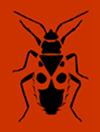昆虫冻害的分子机制综述
IF 1.2
3区 农林科学
Q2 Agricultural and Biological Sciences
引用次数: 5
摘要
本文综述了低温和/或冰冻损伤的分子机制。这篇综述主要针对关注低温影响的昆虫环境生理学家。综述了低温对大分子结构和功能的影响;(2) 冷冻对细胞和大分子的影响以及(3)解冻过程和解冻后的损伤机制。综述表明,损伤主要发生在蛋白质、核酸和生物膜损伤的分子水平上。大分子结构的损伤是温度、结冰和由此产生的次生效应(如渗透胁迫、溶质浓度增加、细胞冷冻脱水、离子平衡破坏和氧化应激)之间相互作用的结果。本综述试图找出我们在生物体冷损伤机制方面的知识差距,并提出可能的未来方向,以填补这些差距。*这篇论文被贡献到一个虚拟特刊上,以纪念《欧洲昆虫学杂志》的长期编辑伊沃·霍德克,他于2021年6月11日去世,也就是他90岁生日后不久。本文章由计算机程序翻译,如有差异,请以英文原文为准。
Cold and freezing injury in insects: An overview of molecular mechanisms
The present review discusses the molecular mechanisms of injury caused by low temperatures and/or freezing. The review is intended mainly for insect environmental physiologists who focus on the effects of low temperatures. The review successively discusses (1) the effects of low temperatures on the structure and function of macromolecules; (2) the effects of freezing on cells and macromolecules and (3) the mechanisms of damage during thawing and post-thaw. The review shows that injury primarily occurs at the molecular level in terms of damage to proteins, nucleic acids and biological membranes. The damage to macromolecular structures occurs as a result of the interaction between the effects of temperature, ice formation and resulting secondary effects such as osmotic stress, increased concentration of solutes, cellular freeze dehydration, disruption of ionic balance and oxidative stress. The present review attempts to identify gaps in our knowledge on the mechanisms of cold injury in organisms and proposes possible future directions that could contribute to fi lling the gaps. * This paper was contributed to a virtual special issue in memory of Ivo Hodek, a long-time editor of the European Journal of Entomology, who died on June 11, 2021, shortly after his ninetieth birthday.
求助全文
通过发布文献求助,成功后即可免费获取论文全文。
去求助
来源期刊
CiteScore
2.30
自引率
7.70%
发文量
43
审稿时长
6-12 weeks
期刊介绍:
EJE publishes original articles, reviews and points of view on all aspects of entomology. There are no restrictions on geographic region or taxon (Myriapoda, Chelicerata and terrestrial Crustacea included). Comprehensive studies and comparative/experimental approaches are preferred and the following types of manuscripts will usually be declined:
- Descriptive alpha-taxonomic studies unless the paper is markedly comprehensive/revisional taxonomically or regionally, and/or significantly improves our knowledge of comparative morphology, relationships or biogeography of the higher taxon concerned;
- Other purely or predominantly descriptive or enumerative papers [such as (ultra)structural and functional details, life tables, host records, distributional records and faunistic surveys, compiled checklists, etc.] unless they are exceptionally comprehensive or concern data or taxa of particular entomological (e.g., phylogenetic) interest;
- Papers evaluating the effect of chemicals (including pesticides, plant extracts, attractants or repellents, etc.), irradiation, pathogens, or dealing with other data of predominantly agro-economic impact without general entomological relevance.

 求助内容:
求助内容: 应助结果提醒方式:
应助结果提醒方式:


